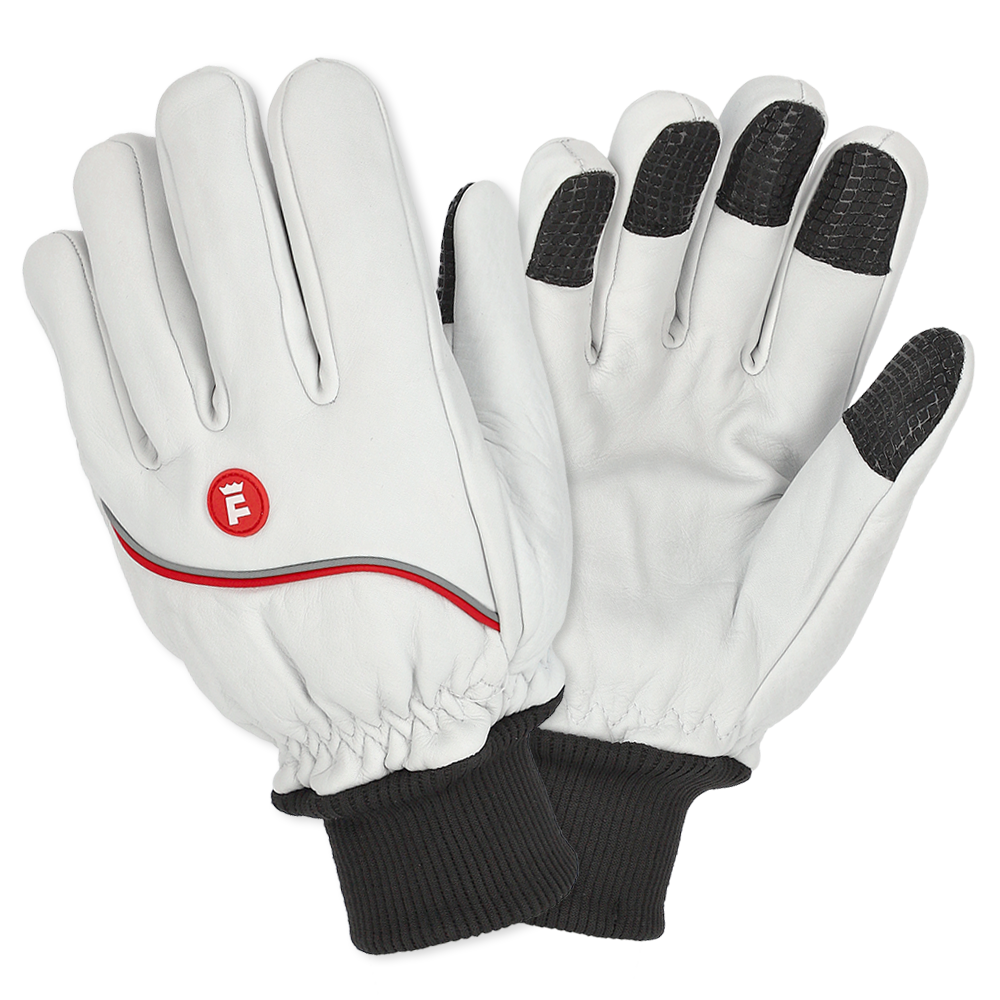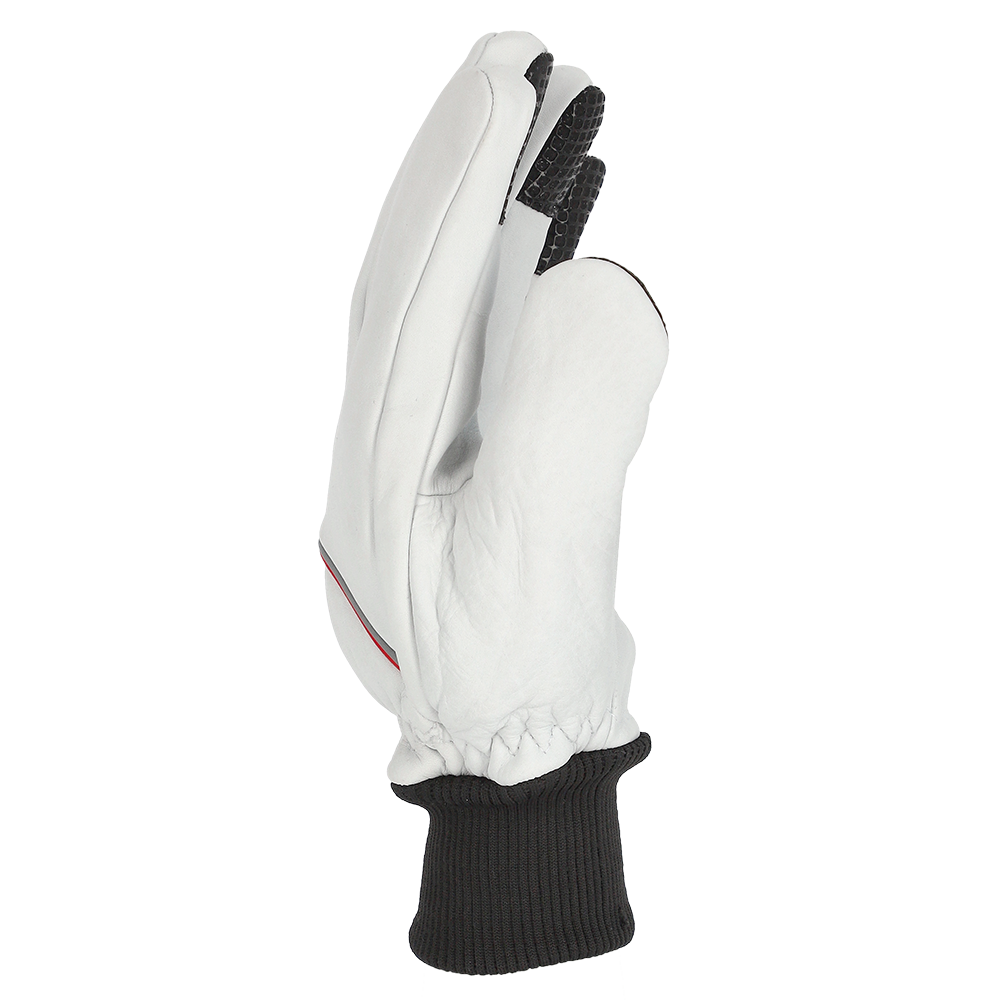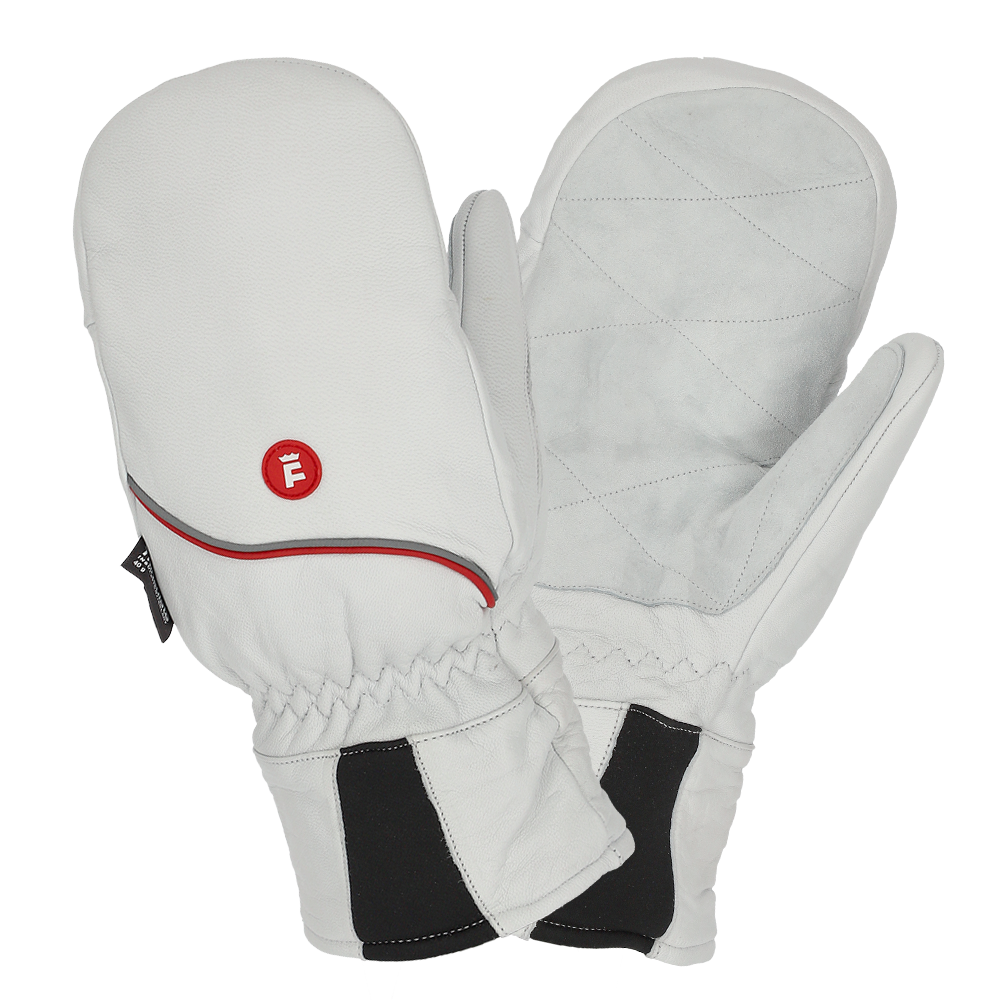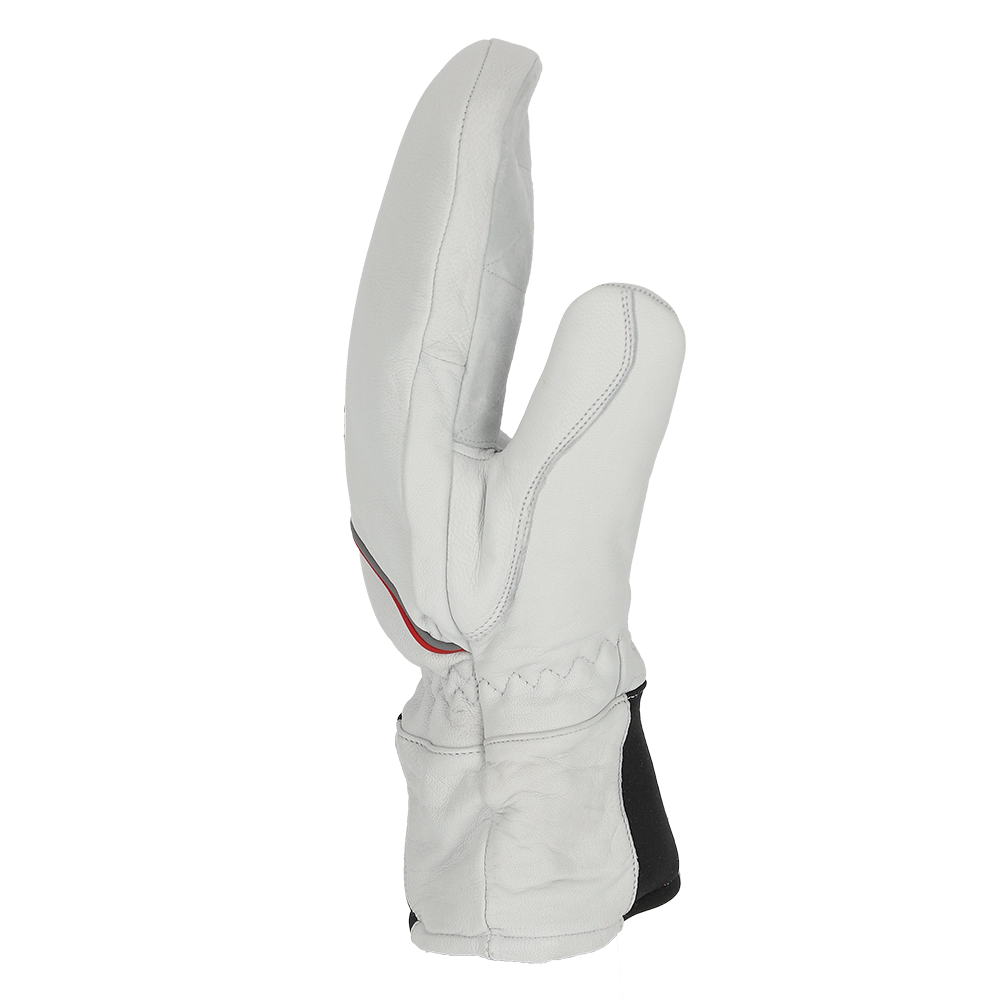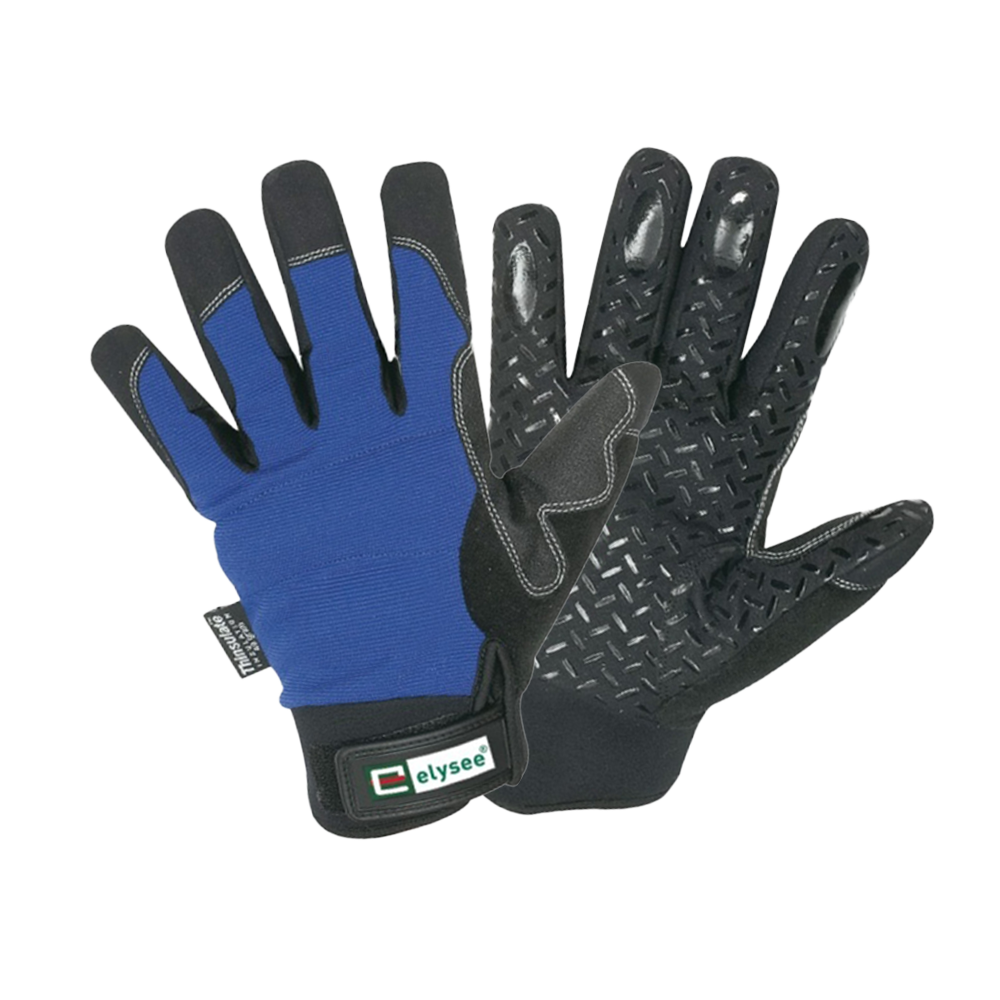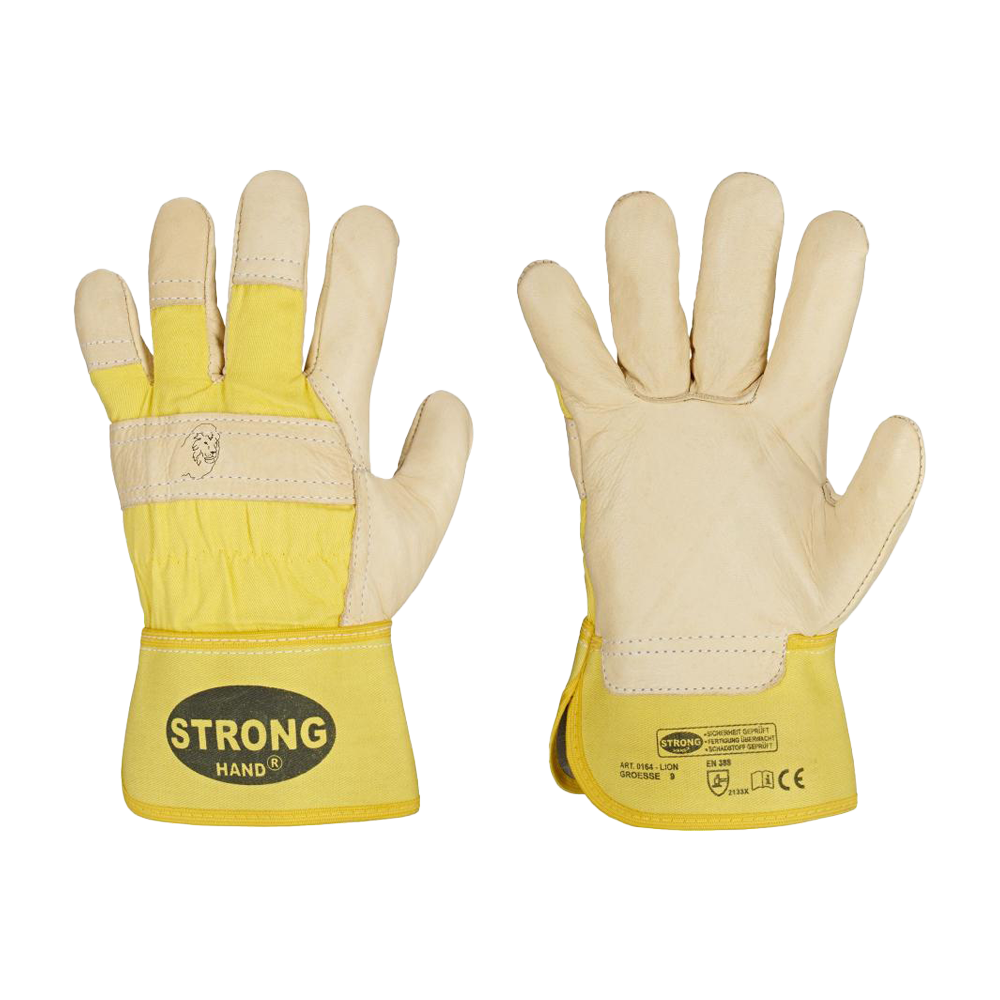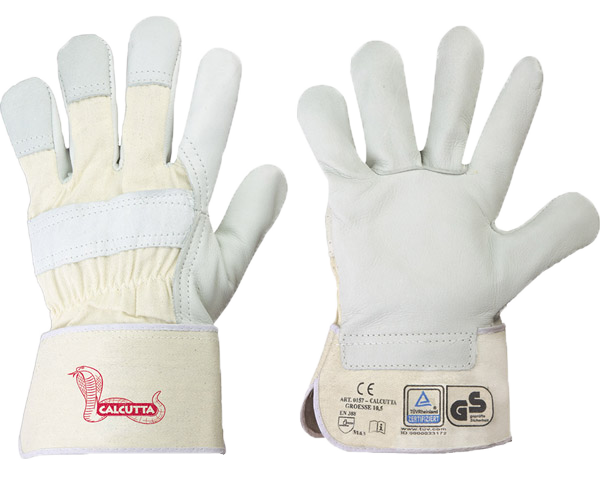Robust Leather Gloves for Goods Handling and Warehouse Logistics.
Experience the strengths of our leather work gloves. Designed for durability, these gloves offer ideal protection against mechanical stress and defy the adversities of warehouses. With their robust, tear-resistant properties, they are ideal for heavy-duty work. The natural material ensures a high degree of stability and a reliable grip in wet conditions. Whether you handle moisture, grease and oil or work in difficult conditions, our gloves are the perfect choice for you.


Durable and Robust Leather Gloves: Ultimate Protection for Extreme Working Conditions.
These durable gloves offer excellent protection against mechanical stress and mild heat. With their rugged and tear-resistant construction, they boast numerous outstanding features and are perfect for intensive and demanding work. Leather, as a natural material, provides high durability and a reliable wet grip. Whether you're dealing with moisture, fats, and oils, or working under challenging conditions, these gloves have you covered.
What Applications Are Leather Gloves Suitable For?
Our insulated freezer leather gloves are primarily used in the food industry and logistics, at temperatures ranging from 10°C to -49°C.
However, uninsulated leather gloves are used for logistics.
What Are the Features of Insulated Freezer Leather Gloves and Logistics Leather Gloves?
Freezer Leather Gloves:
- Specifically designed for use in extremely cold environments such as freezer rooms or cold storage
- Often made from durable, insulating leather and lined with additional insulating materials like Thinsulate™ or polyester to keep hands warm
- Often waterproof or water-resistant
Logistics Leather Gloves:
- Made from pure leather
- Can be used for a variety of applications in normal or mild environments
- May not offer the same insulation as freezer leather gloves
- Not recommended for prolonged contact with water
What Standards Should Leather Gloves Generally Meet?
DIN EN 511:2006
DIN EN 511 specifies the requirements for protective gloves against cold. This standard describes the minimum requirements for thermal conductivity, thermal conductivity in cold conditions, breathability, water resistance, abrasion resistance, and aging resistance.
EN 511 ensures that protective gloves effectively protect against extreme cold conditions and keep the wearer safe from injuries caused by hypothermia. Choosing a protective glove for use in cold environments should be based on EN 511 to ensure it meets the requirements and adequately protects the user.
DIN EN 388:2019
EN 388 outlines the testing procedures that make all protective gloves in PPE categories II and III (protection against medium and irreversible/fatal risks) comparable in terms of their mechanical performance. When choosing between Glove A and Glove B, the user should be able to determine which glove is better suited for their application.
For EN 388, each glove must meet the basic requirements for a protective glove. This is detailed in EN 420. When assessing mechanical protective gloves, the focus is on 6 properties: abrasion resistance, cut resistance according to conventional methods, tear resistance, puncture resistance, cut resistance according to new methods, and impact protection.



